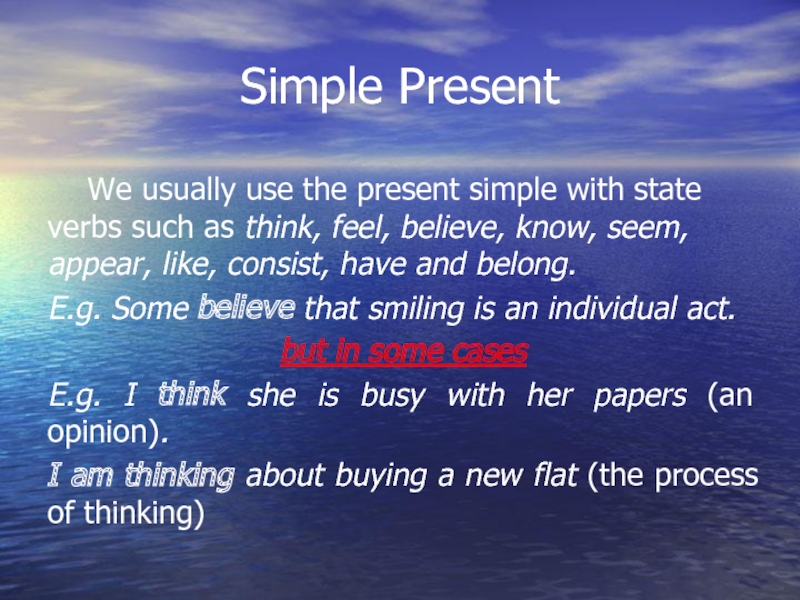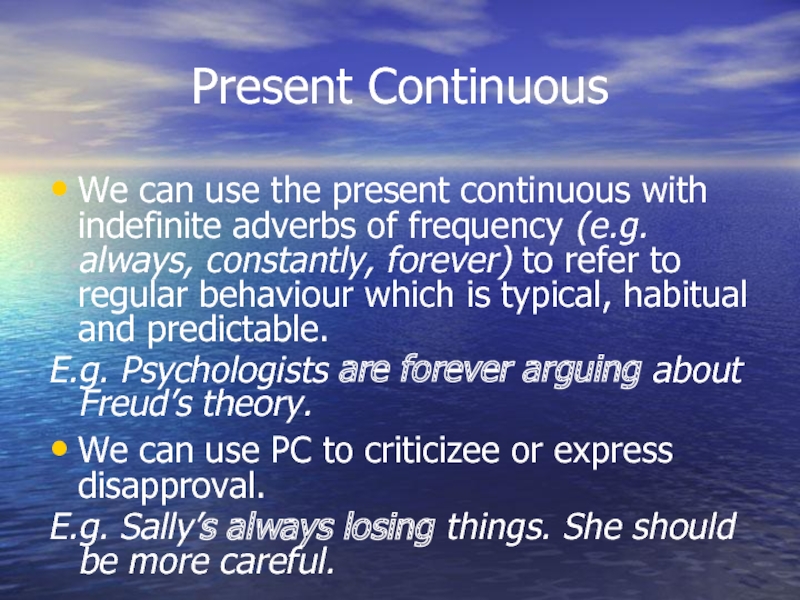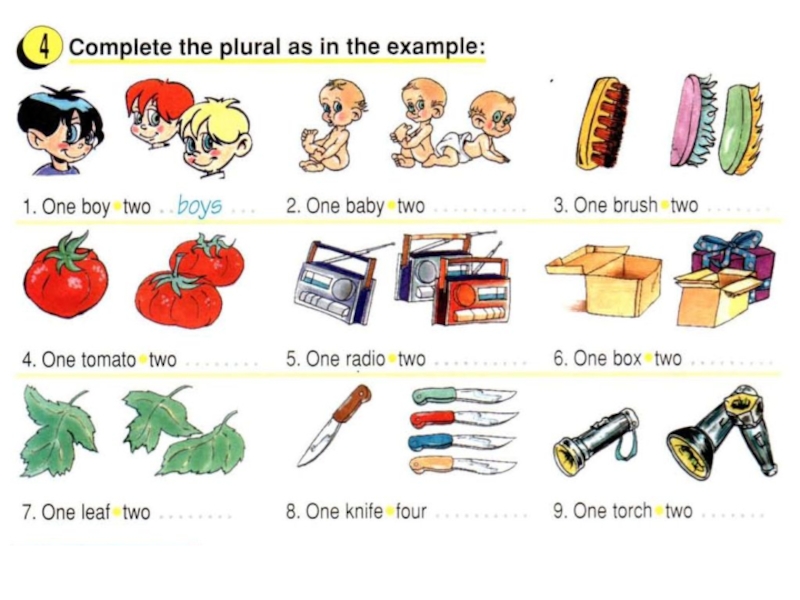- Главная
- Разное
- Дизайн
- Бизнес и предпринимательство
- Аналитика
- Образование
- Развлечения
- Красота и здоровье
- Финансы
- Государство
- Путешествия
- Спорт
- Недвижимость
- Армия
- Графика
- Культурология
- Еда и кулинария
- Лингвистика
- Английский язык
- Астрономия
- Алгебра
- Биология
- География
- Детские презентации
- Информатика
- История
- Литература
- Маркетинг
- Математика
- Медицина
- Менеджмент
- Музыка
- МХК
- Немецкий язык
- ОБЖ
- Обществознание
- Окружающий мир
- Педагогика
- Русский язык
- Технология
- Физика
- Философия
- Химия
- Шаблоны, картинки для презентаций
- Экология
- Экономика
- Юриспруденция
Simple Present Vs. Present Continuous. What’s the difference? презентация
Содержание
- 1. Simple Present Vs. Present Continuous. What’s the difference?
- 2. Simple Present Use the present simple to
- 3. Simple Present We usually use the present
- 4. Simple Present We also often use the
- 5. Simple Present We also often use the
- 6. Simple Present We use the present simple
- 7. Simple Present We use the present simple
- 8. Simple Present When we tell stories or
- 9. Present Continuous Used to show that an
- 10. Present Continuous We can use the present
- 11. Present Continuous We can use Present Continuous
- 12. Present Continuous We use Present Continuous to
- 13. Present Simple and Continuous When we tell
Слайд 2Simple Present
Use the present simple to refer to facts and specific
routines or habits, and with adverbs of frequency.
past present future
I walk to school every day.
Jane likes to play soccer.
We want to play baseball.
***REMEMBER*** VERB + “S” OR “ES”
past present future
I walk to school every day.
Jane likes to play soccer.
We want to play baseball.
***REMEMBER*** VERB + “S” OR “ES”
Слайд 3Simple Present
We usually use the present simple with state verbs such
as think, feel, believe, know, seem, appear, like, consist, have and belong.
E.g. Some believe that smiling is an individual act.
but in some cases
E.g. I think she is busy with her papers (an opinion).
I am thinking about buying a new flat (the process of thinking)
E.g. Some believe that smiling is an individual act.
but in some cases
E.g. I think she is busy with her papers (an opinion).
I am thinking about buying a new flat (the process of thinking)
Слайд 4Simple Present
We also often use the present simple to describe events
shown in a picture, to make them seem more immediate and alive. For the same reason, we usually use the
present simple in news headlines
E.g. A bowler smiles at her friends.
E.g. And Fedorov moves the puck to Ovechkin - who scores on the powerplay!
present simple in news headlines
E.g. A bowler smiles at her friends.
E.g. And Fedorov moves the puck to Ovechkin - who scores on the powerplay!
Слайд 5Simple Present
We also often use the present simple in some expressions
Here come(s)
... and There go(es)....
E.g.There goes Mike, looking as cheerful as usual.
... and There go(es)....
E.g.There goes Mike, looking as cheerful as usual.
Слайд 6Simple Present
We use the present simple with verbs like promise, agree,
assure and demand, which are used to perform the act they describe.
E.g. I promise I won’t be late. (I am using these words to make a promise.)
E.g. I promise I won’t be late. (I am using these words to make a promise.)
Слайд 7Simple Present
We use the present simple to describe a permanent situation
E.g.
Tom lives in Rome. He works as a lawyer for a big Italian company.
Слайд 8Simple Present
When we tell stories or to give instructions, we use
the present simple to describe the shorter actions and the present continuous to describe the longer situations or background activity.
E.g. First, you fry the onion in a little oil. While the onion’s cooking, you chop the vegetables.
E.g. First, you fry the onion in a little oil. While the onion’s cooking, you chop the vegetables.
Слайд 9Present Continuous
Used to show that an action is happening now/around now
past present future
Ex. I am walking to school.
Ex. They are swimming.
Ex. I am eating ice-cream.
***REMEMBER*** AM/IS/ARE + VERB + “ING”
Слайд 10Present Continuous
We can use the present continuous with indefinite adverbs of
frequency (e.g. always, constantly, forever) to refer to regular behaviour which is typical, habitual and predictable.
E.g. Psychologists are forever arguing about Freud’s theory.
We can use PC to criticizee or express disapproval.
E.g. Sally’s always losing things. She should be more careful.
E.g. Psychologists are forever arguing about Freud’s theory.
We can use PC to criticizee or express disapproval.
E.g. Sally’s always losing things. She should be more careful.
Слайд 11Present Continuous
We can use Present Continuous to express changes.
E.g. The sky
is grey. It is getting cold
Слайд 12Present Continuous
We use Present Continuous to express a temporary situation.
E.g. Paul
is living in Rome at the moment. She is working as an English teacher. (She is in Rome temporarily, e.g. for one year.)
Слайд 13Present Simple and Continuous
When we tell stories or to give instructions,
we use the present simple to describe the shorter actions and the present continuous to describe the longer situations or background activity.
E.g. First, you fry the onion in a little oil. While the onion’s cooking, you chop the vegetables.
E.g. First, you fry the onion in a little oil. While the onion’s cooking, you chop the vegetables.


















